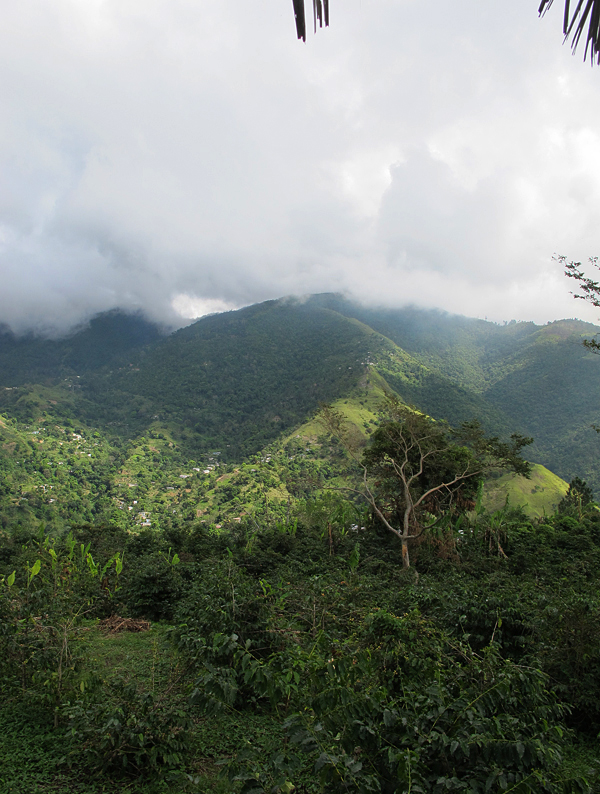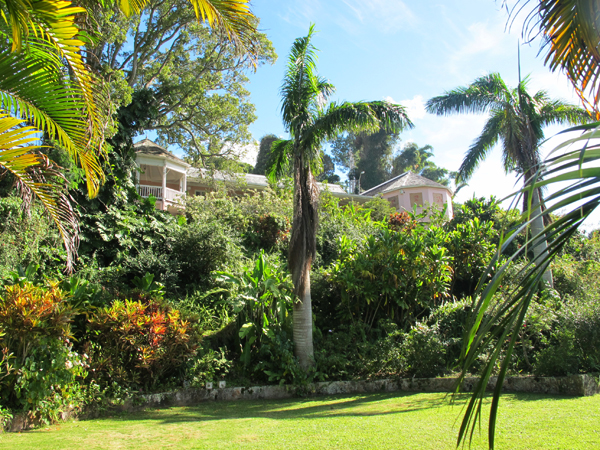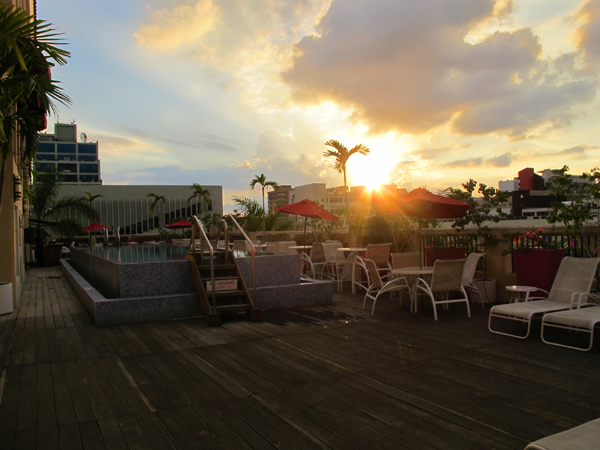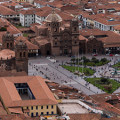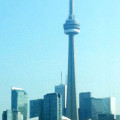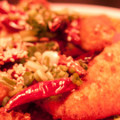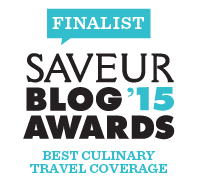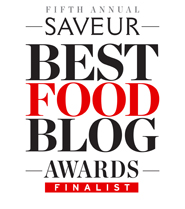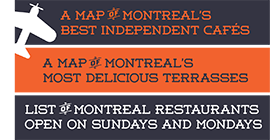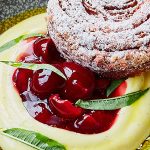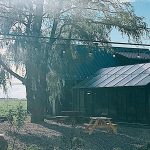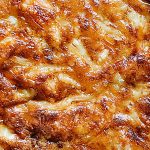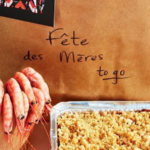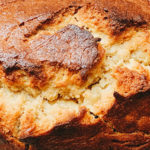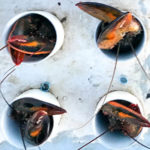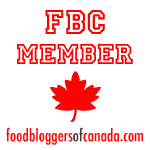I just returned from a very delicious culinary trip to Jamaica. I was invited by the Jamaican Tourism Board to experience some of the country’s best culinary discoveries, as well as their restaurant week, which was in its 6th edition this year.
I had never been to Jamaica and what I discovered under the lush, tropical heat was a melting pot of passionate people eager to take you on a discovery of their land, whether it’s through its culture, history, music, food or unbridled natural beauty. We picture Jamaica as the land of beaches and Bob Marley but what I discovered was so much more than that.
The first thing that struck me while I was still on the plane hovering over the country is how mountainous the island-nation is. One of those mountains – Blue Mountain – was of particular interest to me and I couldn’t wait to explore it! Being the huge coffee aficionado that I am, I was looking forward to finding out more about that magical bean that is a fundamental part of my morning ritual.
I had the chance to do that the day after our arrival in Kingston. The trip to the Blue Mountain is not for the faint of heart or for those who get car sick. I am thankfully neither one of these things but I still gasped a few times, especially since the driving takes place on the opposite side of the road! From Kingston, it is about an hour of winding and twisting turns along the side of a mountain with no barricades. The Craighton Estate, built in 1805 and one of the best preserved Georgian-style house on the island, has breathtaking views over the mountain range. When we arrived, the mist was just starting to lift which added a sense of magic to the experience.
Our tour started with a fascinating presentation by Alton Bedward, Craighton Estate coffee expert who explained that a combination of factors come together to make Jamaica’s Blue Mountain coffee one of the “purest” coffees in the world. Climate, soil, the steep angle at which the plants are grown, the mountain mist and rainfall all combine to create a unique product that is sought after by the most discerning coffee connoisseurs. The presentation was followed by a Blue Mountain coffee tasting under the watchful eyes of one or two curious lizards, some of Jamaica’s cutest inhabitants. Blue Mountain coffee tastes smooth, with hints of cocoa. It has very low levels of acidity and is delicious on its own, with no added cream or sugar.
We then got a tour of Craighton Estate’s 400,000 coffee plantation, all made up of Arabica plants which produce a coffee that is alkaline, full bodied, naturally sweet and with no lingering aftertaste. Because of the steep angle at which the plants are grown, the coffee beans at Craighton Estate are harvested by hand between the months of September and January. Only the ripe, red berries are picked then immersed in water. Any floating berries are considered unfit and discarded. The beans are then dried in the sun as well as in some highly controlled chambers. The husks are then stripped and the green beans are hand-picked for impurities. They are then passed through some metal screens with different sizes of holes in them. Number 1 quality Jamaican Blue mountain coffee is a #17 screen size bean.
Craighton Estate ships the bulk of its beans in its green form. However, they do have a small roasting facility for a few local buyers and for their own sales. Blue Mountain coffee is a rare thing and it is often hard to know whether or not you’re getting the real stuff when buying it. So just to make sure, I got a few pounds of it right on the spot, straight from the roaster, still warm.
Coffee fun facts:
- 75% of the Blue Mountain coffee production goes to Japan
- All the coffee plants in Jamaica originated from 6 plants imported from Java as ornamental plants in 1728
- Jamaica produces 5 to 6 million pounds of coffee a year
- There are 72 beans traded worldwide from 2 species of coffee plants, the Robusta and the Arabica
- The Robusta plant is much more robust, resistant to pests and has a higher yield but is less cultivated than the Arabica worldwide because of the latter’s better tasting coffee
- Only coffee grown at over 2000′ within the Blue Mountain range can claim the name “Blue Mountain”
To book your tour at the Craighton Estate, click here.
Check back soon for my next post on Jamaica: visiting a fruit and spice plantation!
When in Kingston:
I stayed at the lovely Spanish Court Hotel in the heart of New Kingston. It’s located about 45 minutes from the airport and close to quite a few of Kingston’s bars, restaurants and attractions.
The Bob Marley Museum: an absolute must-see for any music lover. Take the guided tour of Bob Marley’s home and plunge into his life and the mystique surrounding him.
Devon House: a beautiful heritage house built by Jamaica’s first black millionaire and now transformed into a complex of boutiques and restaurants. Don’t miss out on I Scream ice cream parlor for some of the best exotic frozen treats you’ll ever have.
Red Bones Blues Café: A Carribean Fusion restaurant with a charming hidden courtyard
Sweetwood Jerk Joint: One of the most delicious stops we made was to Sweetwood Jerk Joint where we enjoyed some jerk chicken, pork and sausage as well as bread fruit, festival (a sweet bread often served with jerk) and mannish water (soup with goat tripe, belly, head and root vegetables)
Details:
There are quite a few direct flights from Montreal to Montego Bay every week. Some of the airlines offering flights are Air Canada Vacations, Sunquest, Sunwings, Westjet and Air Transat. It’s about a 1.5 hour drive from MoBay to Ocho Rios. If you stay at Sandals, your roundtrip airport transfers are included. You can hire a private driver to drive you to Kingston from either Montego Bay or Ocho Rios (there are plenty of companies that do this and would stop at jerk stops along the way, as requested).
For more information on Jamaica, check out the Jamaican Tourism website: Visit Jamaica.


